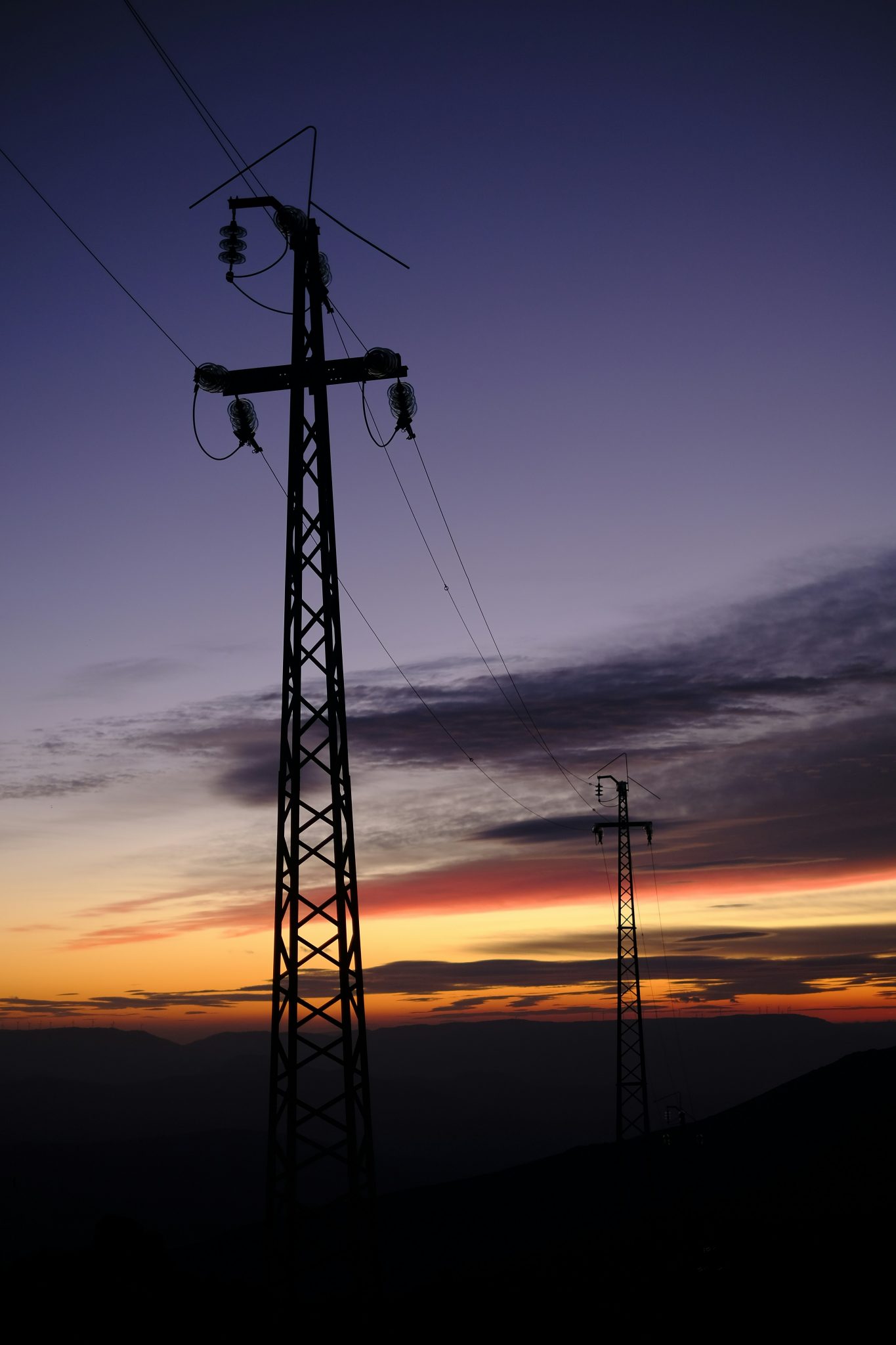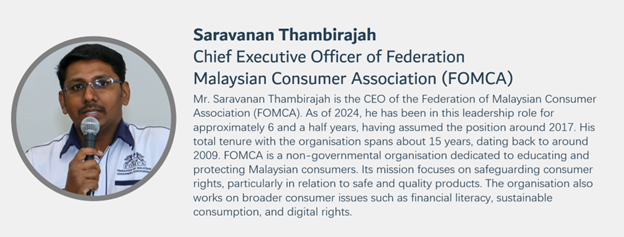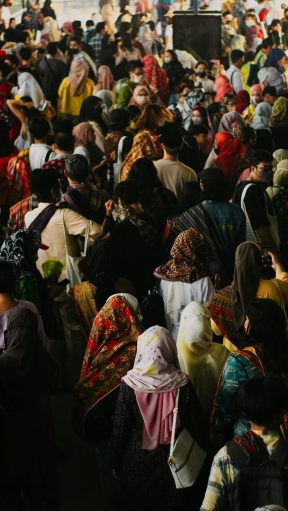
Energy will always be an essential service, serving almost every home and business around the world. But the global energy industry is now undergoing a massive transformation, driven by geopolitical shifts, climate priorities, and technological innovations. As a result, most countries are likely to see structurally more expensive energy in the future.
The revolution in low-carbon energy is the long-term solution to this problem, offering an abundant, affordable and clean electricity supply. Which is why huge amounts of investment has flowed into boosting the supply side of the energy transition – decarbonising industries, developing clean energy solutions, and building the infrastructure to support it.
Nonetheless, a lack of attention on the demand side of the equation may impede the full potential of these long-term efforts. We spoke to Saravanan Tambirajah, CEO of the Federation of Malaysian Consumers Associations (FOMCA), on why the clean energy future ultimately depends on a consumer-first energy industry, led by consumers themselves.
Ensuring a secure and affordable energy future
Geopolitical tensions like the Russia-Ukraine conflict have significantly upended energy markets, thus resulting in dramatic price increases for gas and electricity in recent years. “Since Russia is a major exporter of natural gas and oil, sanctions against it have led to supply shortages and skyrocketing prices”, Saravanan explained.
“For instance, the price of Brent crude oil surged to over $120 per barrel in early 2022, compared to around $50 per barrel in 2020”. Moreover, Saravanan noted that the transition away from fossil fuels to renewable energy sources, if not managed well, can also lead to short-term cost increases, affecting the finances of households and businesses.
This volatility in global energy prices has exposed fundamental fragilities in the retail market design, impacting vulnerable consumers the most. Developing countries face the highest burdens as they have limited capacity to mitigate energy price volatility, leading to energy rationing in some countries and escalating rates of poverty.
Here in Malaysia, the impact of fluctuations in global energy prices is mitigated by the imbalance cost pass-through (ICPT) mechanism within the incentive-based regulation (IBR) framework. The ICPT and IBR enables the nation’s electricity ecosystem to respond to changing fuel costs through flexible pricing adjustments and targeted tariff subsidies.
But while these subsidies have been critical for shielding most consumers from the full impact of rising energy costs, especially those from lower-income groups – Saravanan notes they may not be economically sustainable for Malaysia going forward, especially if global energy prices continue to rise amidst ongoing disruptions.
A more sustainable approach would be to gradually reduce subsidies while continuing to invest in renewable energy sources for the long-term. However, this alone may not achieve the desired outcomes. Research suggests that up to 70% of the success in the energy transition relies on individuals adopting more conscious consumption patterns, adjusting their behaviors, and making lifestyle changes to support a greener future.
Moving energy consumers from interest to action

People are central to the energy system of the future – half of consumers’ impact on the energy transition globally comes directly from shifts in home energy use and transportation. Yet to date, much of the focus of the energy transition has been on the supply side – investing in renewable energy assets and infrastructure upgrades.
“It’s time to give equal attention to the demand side,” believes Saravanan. Rather than slowing the pace of change, he highlighted how energy price volatility and price increases have in fact made consumers more interested than ever in clean energy and in adopting new solutions such as rooftop solar and electric vehicles (EVs).
A recent survey conducted by FOMCA found that 85% of consumers have already started practicing energy efficiency in their homes, while 66% agree that the energy transition is key for achieving the nation’s net-zero targets. These findings suggest that Malaysians remain excited and hopeful for the future, despite the challenges they face in the present.
“Government, industry and regulators have the opportunity to rebuild a more efficient and dynamic retail energy market that reflects the future everyone wants to see, not a past we want to avoid”, said Saravanan. “A future in which energy consumers benefit from greater choice and lower bills, while decarbonising their lives to benefit our society as a whole”.
In this regard, Saravanan commends the introduction of Malaysia’s Energy Efficiency and Conservation Act (EECA), which was passed in October last year following a thoughtful process that spanned nearly a decade. By regulating the heaviest industrial and commercial energy users – the EECA is estimated to generate energy savings worth over RM100 billion.
Saravanan believes the Act signals a clear direction by the Government – confidently championing demand-side energy management as a key component of Malaysia’s broader net-zero pathway as laid out by National Energy Transition Roadmap (NETR). Beyond energy savings, the EECA is also projected to cut carbon emissions by nearly 200,000 kilotons.
 Energy for the people, by the people
Energy for the people, by the people
The best way to ensure consumers are protected from high energy prices in the future will be to permanently reduce the amount of energy they collectively need – providing clear additional support and incentives for energy-efficient practices, while ensuring that consumers that engage with the market for low-carbon technologies are protected.
Going beyond the EECA, industry players and energy suppliers can work together with the government to create a genuinely consumer-centric energy industry that activates every citizen’s participation in the energy system. “This will ensure the energy transition is fair and equitable, providing benefits to all segments of society”, explained Saravanan.
Winning over consumers starts with developing a deeper understanding of their diverse values and drivers. As the energy market changes, everyone will have different energy wants and needs. Some will want help working out what improvements to make to homes, others need help to finance them. Some will want full control, while others will prefer automation.
Energy suppliers are in the middle of all this change, offering customers a single point of contact which connects them with an increasingly complex energy system. They will need to innovate, offering new products and approaches, earning the trust and loyalty of consumers, and unlocking economic value for all – without leaving anyone behind.
Saravanan notes that suppliers in Malaysia are already demonstrating leadership and vision, bringing innovative products and services to market. Tenaga Nasional Berhad (TNB)’s rollout of smart meters nationwide for example is a prerequisite for households to transition to net-zero, empowering them with greater visibility and control over their own carbon footprints.
Moving forward, the decentralisation of power generation will be critical for Malaysia to move toward self-sustainability. This paradigm shift favours the emergence of new electricity market designs based on peer-to-peer (P2P) structures, where proactive consumers or prosumers can trade their energy produced from renewable sources directly on the grid.
“Ultimately, energy is now personal for consumers,” remarked Saravanan. Disruption and price changes might have shaken consumer confidence, but it has also accelerated their interest and engagement in sustainability. Saravanan believes investing in the capabilities that will help consumers move forward on their energy journey is a no-regret action.
From politicians and CEOs to average citizens, a whole-of-society effort is pivotal in reaching Malaysia’s net zero by 2050 aspirations. “As the saying goes, it takes a village. A holistic, consumer-centric approach to the energy transition is how we progress toward a fairer, greener, and better energy system that delivers more value for everyone”.



